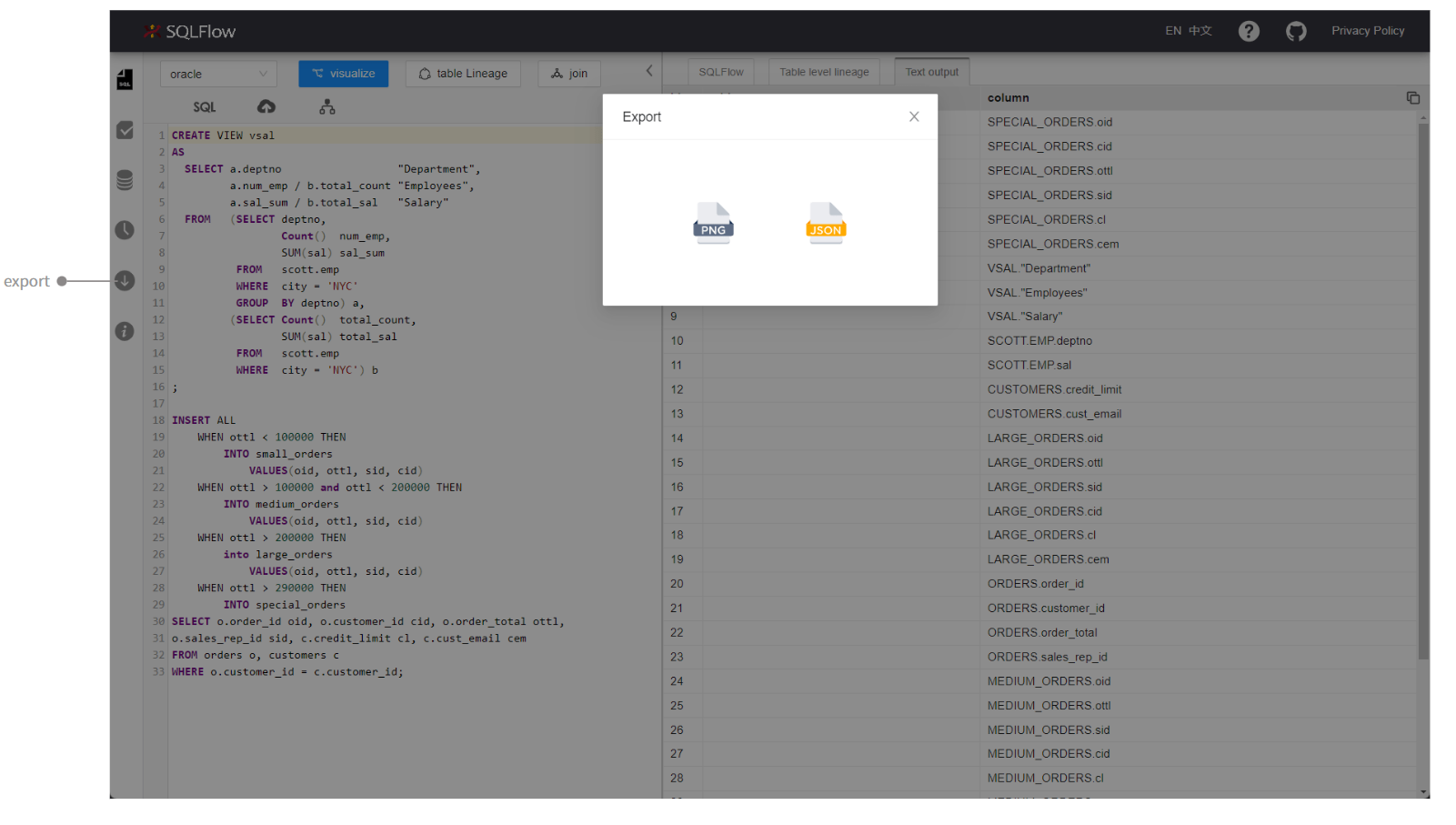Settings¶
Input different request parameters to the graph API to get different results:
| Parameter | Acceptable values |
|---|---|
| showRelationType | If direct dataflow = true then it is fdd and we will show only direct dataflow. |
| dataflowOfAggregateFunction | Whether take the parameters in the COUNT function as direct or indirect dataflow |
| ignoreRecordSet | true or false |
| ignoreFunction | true or false |
| showConstantTable | true or false |
| showTransform | true or false |
We can observe the changes on parameters when switching different modes:
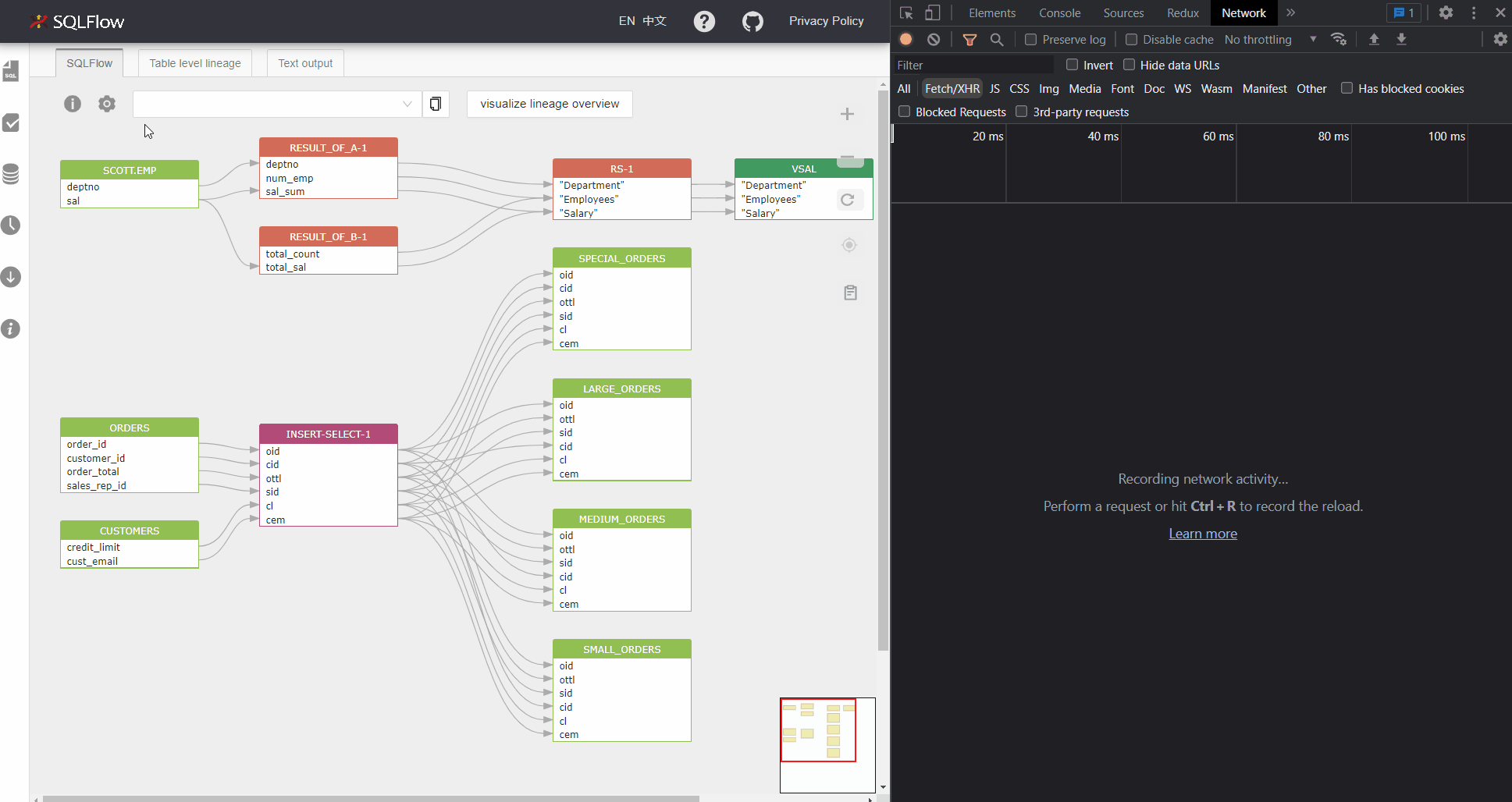
Configurable parameters when creating jobs or visualizing the SQL in SQL Editor¶
You will be able to set the config when creating data lineage with the SQL Edior as well as giving the configurable parameters under the setting section during the job creation.
Customizing parameters when visualizing your SQL:
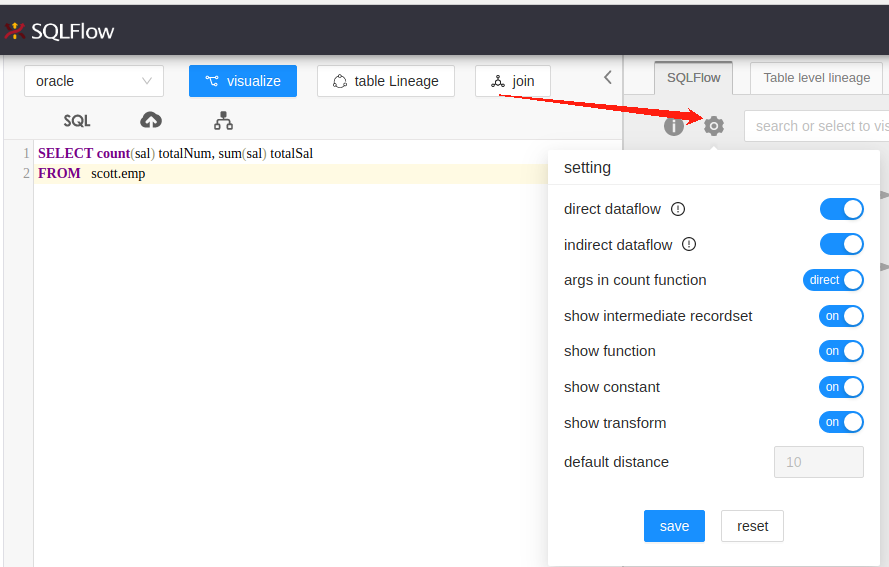
Giving the configurable parameters under the setting section during the job creation:
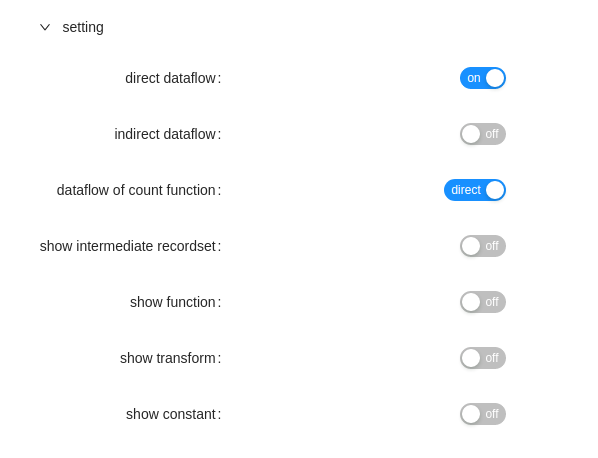
| Parameter | Possible Values | Description |
|---|---|---|
| direct dataflow | On/Off | Whether show direct dataflow or not. |
| indirect dataflow | On/Off | Whether show indirect dataflow or not. |
| dataflow of count function | direct/indirect | Whether take the parameters in the COUNT function as direct or indirect dataflow |
| show intermediate recordset | On/Off | Show intermediate recordset or not. |
| show function | On/Off | Show function or not |
| show transform | On/Off | Show transform or not |
| show constant | On/Off | show constant or not |
Take the following sql as example:
1 2 | |
When we set all values as On and direct as the value in dataflow of count function when creating the job/visualizing the SQL, we will get following data lineage:

All direct dataflows and indirect dataflows are present in above data lineage. We show the functions in the sql and intermediate recordSets are shown.
The indirect dataflows will not be present if we turn Off indirect dataflow:

You can read more theory about what is direct dataflow/indirect dataflow and why aggrect function COUNT is different.
Show function¶
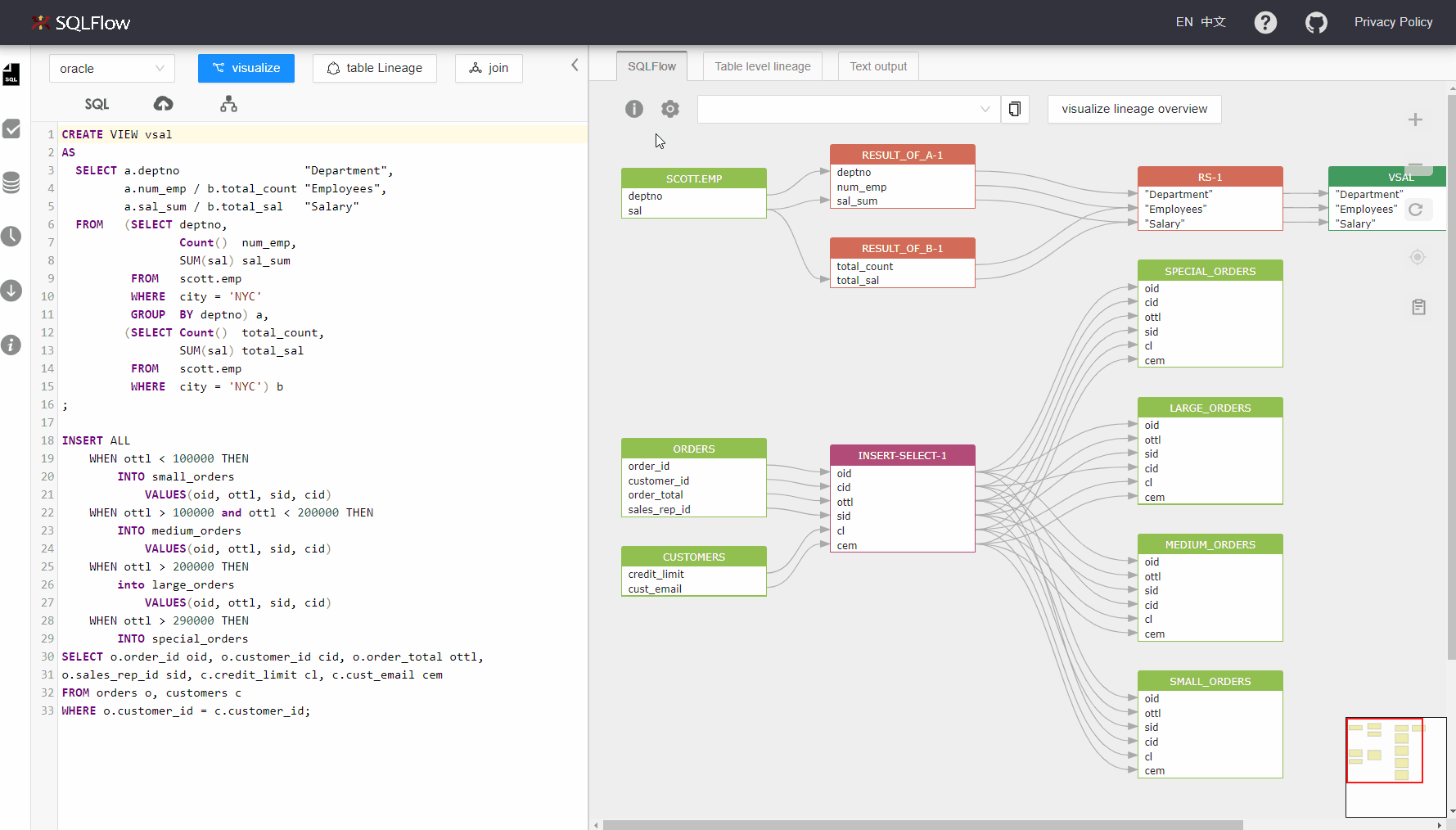
Show transform¶
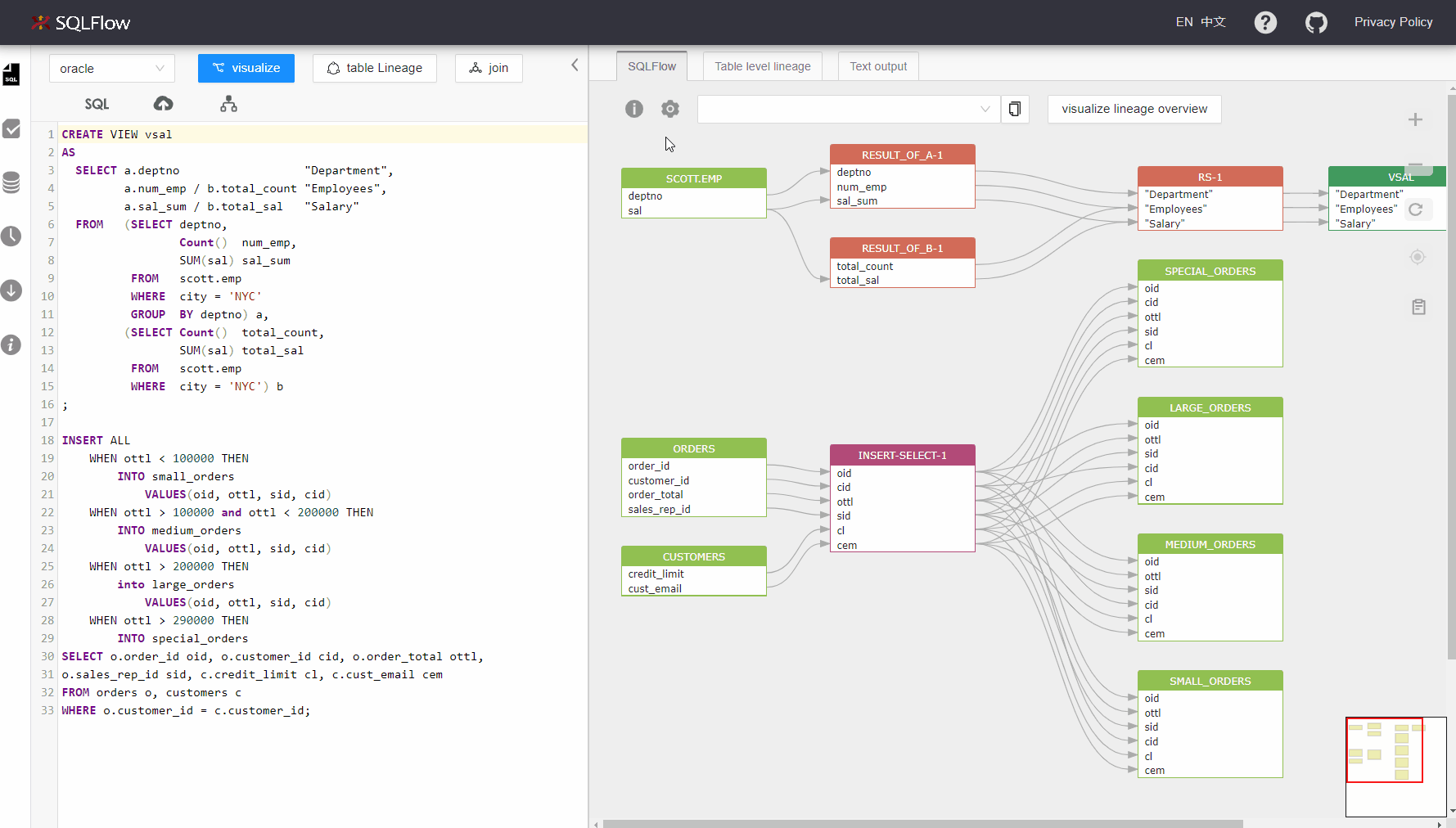
Export the graph¶
